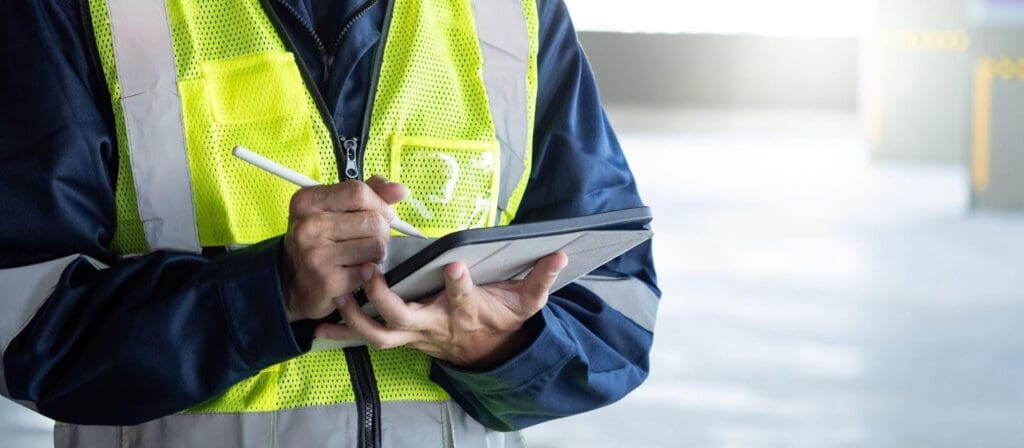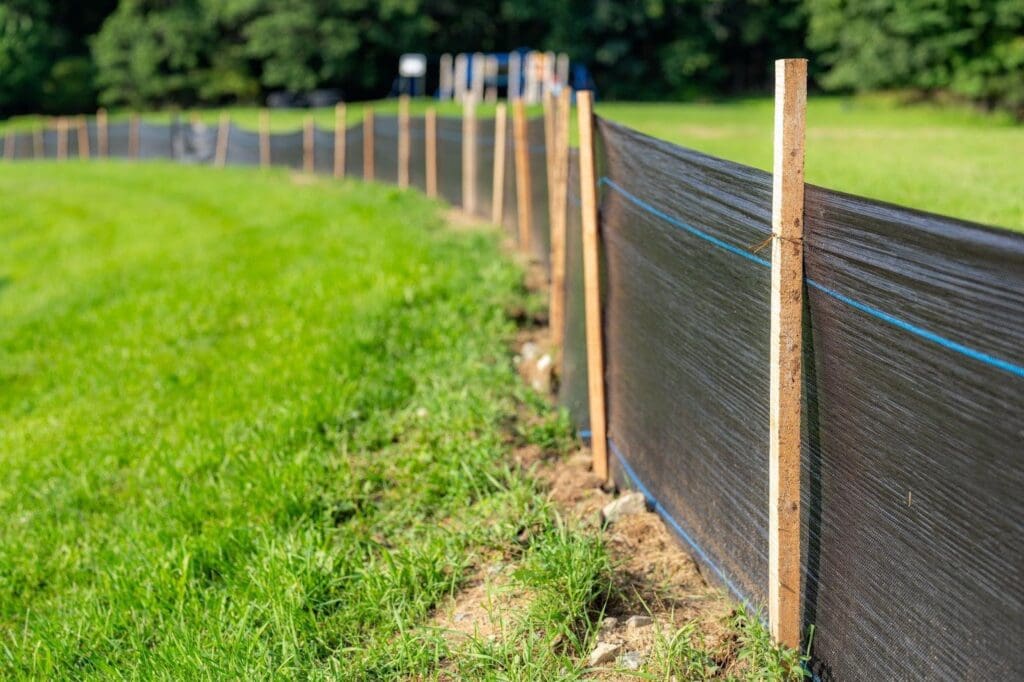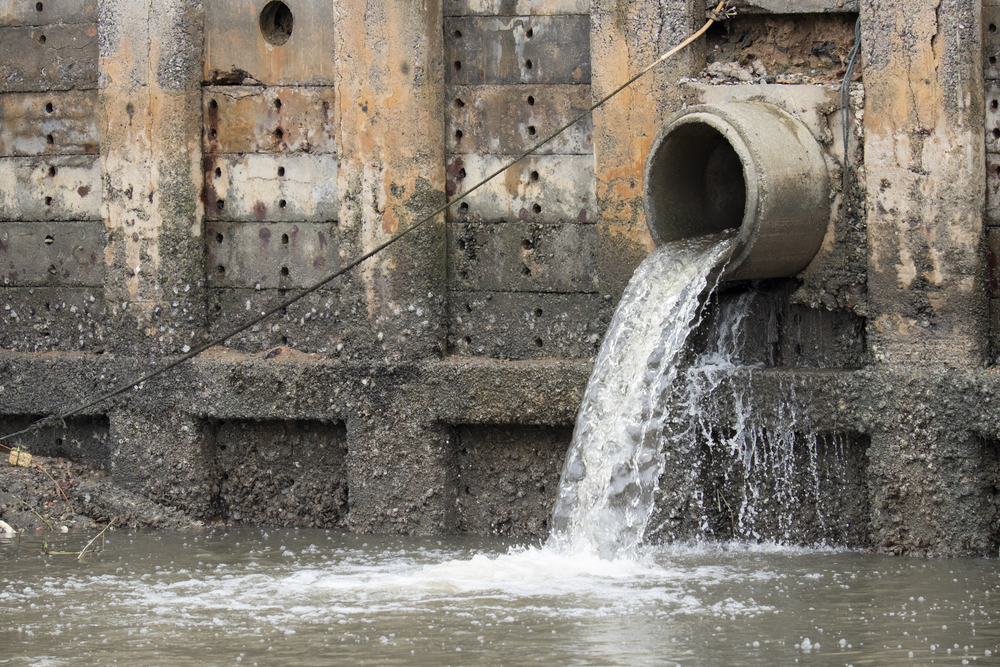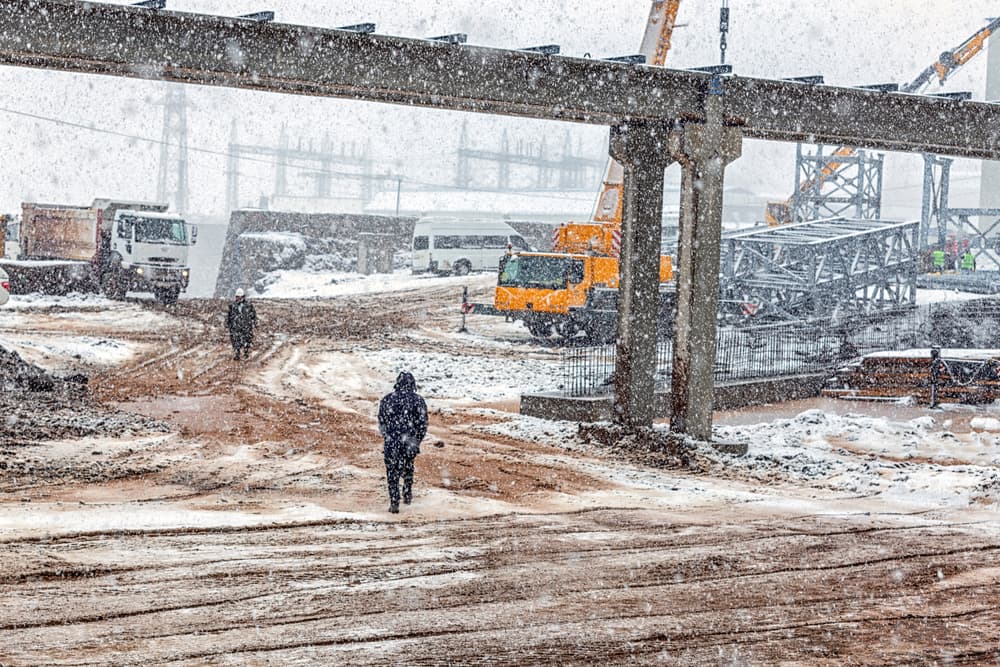A successful SWPPP inspection starts with smart preparation. These inspections help ensure your Stormwater Pollution Prevention Plan works as intended — keeping your site compliant, your Best Management Practices effective, and your project moving forward.
With the right steps in place, passing an inspection isn’t stressful — it’s routine. In this blog, we’ll walk you through how to get ready with confidence, from reviewing your documents to checking BMPs and training your crew. Whether it’s your first inspection or your fiftieth, staying ready is easier than you think.
What is the purpose of an SWPPP inspection?
An SWPPP inspection ensures your Stormwater Pollution Prevention Plan is followed and enforced on the ground. The goal is to confirm that your job site’s stormwater controls actively prevent pollutants like sediment, trash, and construction debris from entering storm drains or nearby waterways.
Inspectors check that Best Management Practices (BMPs) are correctly installed, properly maintained, and functioning as intended. They also review documentation like inspection logs, maintenance records, and site maps to ensure you stay compliant with your state’s stormwater permit, usually issued under the National Pollutant Discharge Elimination System (NPDES).
In short, an SWPPP inspection verifies that your site is doing what your plan says it will do. It’s a safeguard that protects public water resources and helps you avoid violations, fines, and costly project delays. When handled proactively, inspections also provide a valuable opportunity to fine-tune your erosion control strategies before small issues become major problems.

Know your inspection schedules and triggers
One of the most important parts of staying compliant is knowing when your SWPPP inspections are required. These aren’t random. They follow a set schedule based on your permit type and site conditions. Missing an inspection is a compliance violation, even if your site appears to be in good shape.
In most cases, construction sites must be inspected:
- At least once every seven to 14 calendar days, depending on local and state requirements.
- Within 24 hours of a qualifying rain event, typically defined as 0.5 inches or more in 24 hours.
Some permits also require inspections before site shutdowns, after snowmelt, or during extended dry weather to confirm that BMPs are still intact and functional.
It’s essential to review your stormwater permit to understand exactly what’s required for your site. RSI-certified professionals or compliance consultants can help interpret these rules and build a custom schedule.
Whether it’s a routine check or a post-storm inspection, being prepared on time keeps your project moving and protects you from enforcement actions.
Review your SWPPP documents
Before any inspection, your first step should be carefully reviewing your SWPPP (Stormwater Pollution Prevention Plan) documents. This is more than paperwork — it’s the foundation of your stormwater compliance. If your plan is outdated or incomplete, it could lead to violations, even if your BMPs look fine on the ground.
Make sure your SWPPP:
- Reflects the current conditions of your jobsite
- Includes updated site maps with all drainage points, BMP locations, and stockpiles clearly marked
- Lists contact info for responsible personnel and inspection schedules
- Contains records of previous inspections, maintenance logs, and any corrective actions taken
Regulators want to see that your plan is site-specific, regularly maintained, and backed by documentation. If anything in the field has changed — like where materials are stored or where runoff flows — it must be reflected in the plan. A mismatch between what’s in your binder and what’s on your site is a red flag.
By staying ahead of updates and organizing your records, you’ll show inspectors that your compliance is intentional.
Check your BMPs on site
Your Best Management Practices (BMPs) are the physical proof that your Stormwater Pollution Prevention Plan is working. During an SWPPP inspection, these controls are the first thing inspectors will look at — and if they’re missing, damaged, or installed incorrectly, your site is at risk for a violation.
BMPs prevent stormwater from picking up and carrying pollutants into local waterways. That includes erosion control (like silt fences and fiber rolls), sediment barriers, stabilized construction entrances, inlet protection, and more. But even the best plan on paper means nothing if those controls aren’t functioning in the field.
Before the inspection:
- Walk the site and verify that each BMP is installed correctly.
- Check for signs of failure like torn silt fences, clogged inlets, or displaced gravel.
- Look for areas where runoff is bypassing or overwhelming the controls.
- Replace or repair any damaged BMPs immediately.
This proactive walkthrough can catch small issues before they become expensive problems. Well-maintained BMPs show inspectors that you take compliance seriously and are doing your part to protect water quality.
Organize inspection records and logs
Even if your site looks perfect, you still need to show your work. Inspectors want to see proof that you consistently maintain BMPs and follow your SWPPP, and that starts with organized, up-to-date documentation.
Your inspection records and logs should include:
- Completed inspection forms with dates, inspector names, and detailed notes
- Photographs showing BMP conditions and any maintenance performed
- Corrective action reports and follow-ups with timestamps
- Weather data logs (if required) showing rainfall events and responses
- Site maps and records of any changes made to the SWPPP
Keep everything in a central location, either in a labeled binder stored onsite or in a digital system that’s easy to access. If an inspector asks for a specific report, you should be able to find and present it within minutes.
Sloppy, missing, or disorganized records are red flags. On the other hand, organized logs show that your compliance is consistent, not reactive. It’s one of the simplest ways to make a good impression during an inspection and avoid unnecessary penalties.
Train your crew and assign responsibilities
A successful SWPPP inspection doesn’t rest on one person — it takes a well-informed crew. Everyone on site should understand the basics of your plan, especially how their work affects runoff and BMP performance.
Start by making sure your team knows:
- What BMPs are in place and why they matter
- How to recognize when a control is damaged or failing
- What materials need proper storage and disposal to avoid pollution
- Who to report problems or concerns to on-site
It’s also critical to assign a primary SWPPP contact — someone who knows the plan inside and out and is present during inspections. They’ll serve as the point of contact for inspectors, maintain the documentation, and oversee daily BMP upkeep.
When everyone is aware of their role, inspections go smoother, fixes happen faster, and compliance becomes part of the daily routine, not a scramble at the last minute.

Perform a pre-inspection walkthrough
Think of a pre-inspection walkthrough as your dress rehearsal before the real show. It allows you to catch small problems before an inspector does. Taking time for a site review can be the difference between passing cleanly and receiving a violation.
Use your SWPPP checklist as a guide and walk the entire site:
- Inspect every BMP for wear, damage, or signs of failure
- Confirm signage is posted, visible, and up to date
- Check access to inspection records and verify that logs are complete
- Identify areas with recent changes that may need documentation updates
- Look for trash, loose debris, or tracking that needs cleanup
Doing this walkthrough a day or two before your scheduled or expected inspection gives you time to make corrections without pressure. It also reinforces daily compliance habits among your crew and builds confidence that everything is in order.
A little preparation goes a long way — and inspectors will notice when your site is well-managed, not just lucky.
Stay SWPPP compliant with Erosion Control Services
SWPPP inspections don’t have to be stressful — when your site is prepared, your team is trained, and your plan is solid, compliance becomes routine.
Erosion Control Services provides everything you need to stay inspection-ready, from certified SWPPP inspections and BMP installation to documentation support and pre-inspection walkthroughs.
Whether you’re managing a small build or a large commercial site, our team knows the regulations, understands the risks, and delivers the right solutions.
Let us help you pass with confidence. Contact Erosion Control Services today for expert stormwater compliance support that keeps your site clean, your paperwork tight, and your project moving forward.



